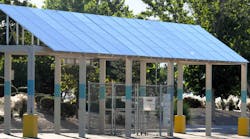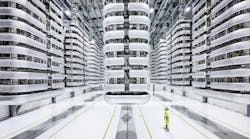Hurricanes Harvey, Irma, and Maria overwhelmed the power grids in their paths despite all the storm hardening utilities performed prior to the 2017 hurricane season. Let’s face it, a Category 4 or 5 hurricane is a force that cannot be tamed by technology, but we are learning with each storm and are making progress in making the grid more resilient. You might say today’s grid is more weatherproof than ever before thanks to improving digital technology. One of those technologies is distributed energy resources (DERs). DERs started out in a much simpler form (i.e., home solar panels and backup diesel generators), but the technology advanced. Today it includes a lot of nontraditional tech toys that have brought about two-way power flows on the distribution network such as fuel cells, rooftop solar, energy storage, demand management software, etc. – you get the picture.
So far, the emphasis with DERs has been on the customer’s side of the meter for the benefit of the customer, but that is changing as creative thinking is applied to storm hardening the grid. One idea being discussed is reconfiguring the bulk power delivery system to take advantage of DER technology. Proponents point out that microgrids have provided electricity to hospitals, emergency response centers, apartment buildings, and neighborhoods. They want to locate utility-scale DER technology on the transmission system, which is not so farfetched as it seems. If you remember back when DERs were initially installed on the distribution feeders, there was plenty of resistance to the technology from all sectors. It took a great deal of work to make it happen. I remember many pilot projects and a great deal of study-work taking place to prove the technology would function as promised.
It’s Doable
Supersizing DERs for the bulk power system’s needs however, is going to be challenging due to the bulk power system’s complexity. There is also the issue of reliability. Questions are being asked about how integrating such large DERs will affect the transmission grid. This is what caught my attention and makes this such an exciting subject. We know a lot about DERs and we know a lot about the transmission grid, but combining the information isn’t as simple as you might think. The North American Electric Reliability Corporation (NERC) has been studying the topic and published a report earlier this year. It is available from NERC’s web site and makes some interesting reading.
NERC’s goal is to help the industry have a better understanding of the differences between DERs, conventional generation, and how DERs will affect the bulk power system. NERC brought up some thought-provoking questions such as how do we connect, control, and dispatch large DERs? What strategies are needed for safety and protection, and what about stability of the grid when DERs are integrated into the bulk power system? That is why I said it wasn’t a simple process, but it is also what makes it so fascinating. In effect, we are talking about taking the next evolutionary step for our smart grid.
It’s Never Easy
I was having trouble putting this subject matter into perspective to write this column. Then I had the inspiration I needed last week. I read the Straight Talk column (several times) in the November issue of T&D World. It was written by an old friend of mine, Chris Hickman. We worked together many years ago and had great discussion about a lot of ideas over way too many cups of coffee. Reading the column was a lot like sitting down with him again, which generated some fun emails between us.
His column was about connecting the dots as the grid evolves. The dots being all manner of technologies and sources that are being used to modernize the grid and make it a sophisticated electric ecosystem more complex perhaps, but better in the long run. It is an interesting viewpoint and I recommend you read it for yourself rather than me paraphrasing it here. As I read Chris’ column, all my rambling thoughts about transmission DERs versus distribution DERs began to come into focus. The idea of mixing distribution and transmission technologies made more sense because we have one grid bringing electricity to the consumer. Basically, it’s just a matter of adapting technology to get all the parts playing nicely together. Granted it’s not going to be easy, but it is going to be fun. Thanks Chris!


